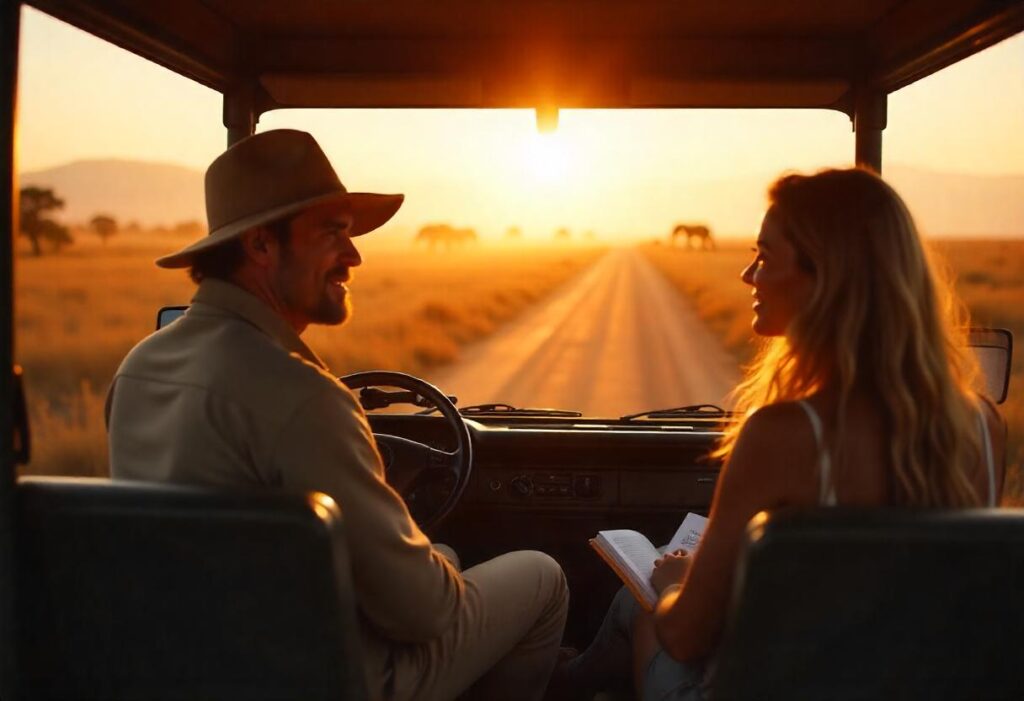Embarking on your first game drive is an unforgettable adventure, but it can also raise many questions. What will the experience be like? How long will it last? What animals might you see in Africa? And how should you behave? This guide answers all those questions to help you prepare and enjoy your very first safari game drive with confidence.
What is a game drive?
A game drive is a guided tour in a safari vehicle that takes you through a wildlife reserve or national park to observe animals in their natural habitat. Typically led by a professional guide and sometimes a tracker, game drives offer close encounters with Africa’s iconic wildlife, including lions, elephants, giraffes, and more.
When do game drives usually take place?
Early morning game drives
Most game drives start just before sunrise, around 5:30 to 6:00 am. This timing lets you catch animals when they are most active, especially predators hunting or herbivores feeding in the cooler hours. The light at dawn also offers stunning photo opportunities.
Afternoon game drives
The second game drive usually begins mid-afternoon, around 3:30 to 4:00 pm, and lasts until sunset. Animals tend to be more active again as temperatures drop. These drives often include a break at a scenic spot for refreshments.
How long does a game drive last?
Game drives generally last between 3 to 4 hours. The exact duration depends on the lodge, park regulations, and the animals’ movements. It’s common to have a mid-drive stop for tea, snacks, or simply to enjoy the view.
What should you bring on your first game drive?
- Clothing: Neutral-colored, lightweight clothes to blend in with the environment (avoid bright colors). Layered clothing is recommended as mornings can be chilly.
- Footwear: Comfortable closed shoes suitable for dusty terrain.
- Sun protection: Hat, sunglasses, and sunscreen.
- Binoculars and camera: For wildlife viewing and photography.
- Water bottle: Staying hydrated is key.
- Optional: Insect repellent and a light scarf for dust protection.
How to behave on a game drive: Tips for beginners
- Listen to your guide: Guides are trained to track animals and keep you safe.
- Stay quiet: Silence increases your chances of spotting wildlife and respects the animals’ natural behavior.
- Keep your distance: Do not try to touch or feed animals.
- Stay seated and inside the vehicle: For safety and to avoid disturbing wildlife.
- Avoid sudden movements and flashes: Cameras should be used without flash to prevent startling animals.
What animals can you expect to see on your first game drive?
While sightings depend on the region and season, common animals often spotted include:
- The “Big Five”: lion, leopard, elephant, buffalo, and rhino.
- Zebras, giraffes, wildebeest, impalas, and other antelope species.
- Predators like cheetahs and hyenas.
- Various bird species such as eagles, vultures, and hornbills.
Remember, wildlife is unpredictable. Every game drive is unique and offers different experiences.
What to expect during the drive: step-by-step
- Pickup and briefing: Your guide will pick you up at your lodge and provide a briefing about safety and the day’s plan.
- Game drive begins: The vehicle will set off slowly, with the guide scanning the terrain for wildlife signs.
- Tracking and spotting: Using expertise and sometimes a tracker, the guide locates animals and explains interesting facts.
- Stops for photos and refreshments: Short breaks let you take photos or enjoy a snack.
- Return: The drive usually ends at the lodge before dark for your safety.
Final thoughts: Making the most of your first game drive
Relax, stay curious, and be patient. Wildlife sightings can sometimes take time, but the anticipation and connection with nature make it all worthwhile. Ask your guide questions, and enjoy the once-in-a-lifetime experience of a safari.
FAQs
No, game drives are designed for all experience levels. Professional guides will explain everything and ensure your safety and enjoyment.
Yes, many lodges welcome children on game drives, but age restrictions may apply depending on the reserve for safety reasons.
Most game drives use open or semi-open 4×4 safari vehicles that provide good visibility and access to rough terrain.
Yes, some reserves offer night game drives with spotlights to observe nocturnal animals, but these are usually separate from standard morning or afternoon drives.
Sightings depend on the park and luck, but guides use their expertise to find both common and rare wildlife while keeping safety a priority.
Game drives are generally low-impact activities involving sitting in the vehicle; however, rough terrain can cause some bumps.
Many game drives include a break with refreshments like tea and snacks, but full meals are usually served back at the lodge.






